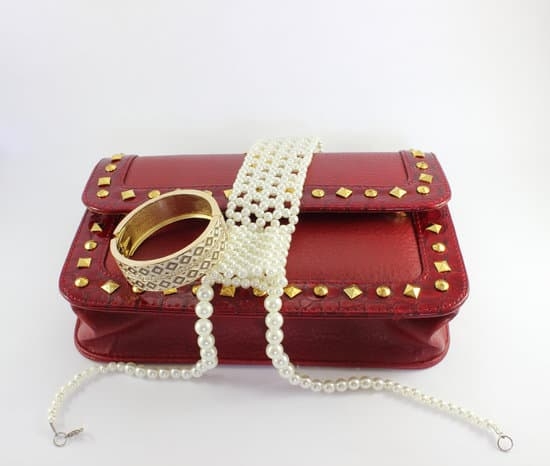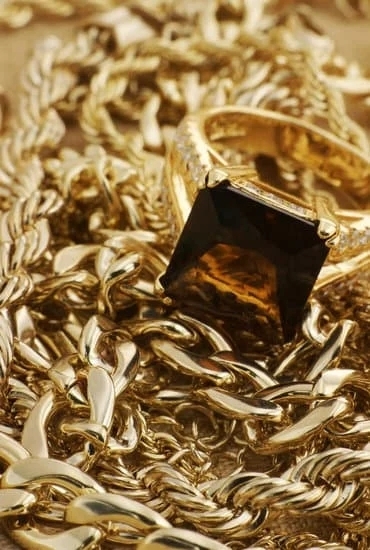The history of American jewelry is a captivating tale that spans centuries, showcasing the remarkable craftsmanship, innovation, and cultural influence that has shaped the industry. From the intricate designs of Native American tribes to the glamorous Art Deco era and beyond, American jewelry has played an integral role in both personal adornment and reflecting societal trends.
This article delves into the fascinating world of American jewelry, tracing its origins, highlighting influential designers, and exploring the enduring beauty that defines this unique art form.
Jewelry holds a significant place in American history as it not only served as a means of self-expression but also reflected the values and aspirations of different eras. The allure of jewelry lies not only in its material value but also in its ability to symbolize love, status, and personal identity. Throughout history, American jewelers have created pieces that capture these sentiments with unparalleled artistry.
From pioneers like Paul Revere during colonial times to legendary names such as Tiffany & Co., American jewelry designers have made indelible marks on the industry. These innovative craftsmen embraced different styles and materials over time, leaving lasting legacies that continue to inspire contemporary designers today.
Join us on this journey through the rich history of American jewelry as we explore its origins among Native American tribes, admire pioneering designs from colonial times, revel in the opulence of the Victorian era and glimpse into various design movements such as Art Nouveau and Art Deco. We will also delve into modern trends shaping contemporary American jewelry designs and celebrate their timeless beauty. Embark with us on this captivating exploration of American jewelry’s remarkable journey through time.
Pre-Colonial era
During the Pre-Colonial era, the indigenous people of America had a rich tradition of jewelry making that dates back thousands of years. Native American tribes such as the Navajo, Hopi, Apache, and Zuni were renowned for their exquisite craftsmanship and unique designs.
One of the most fascinating aspects of Native American jewelry is the materials used in its creation. The tribes had access to a wide variety of natural resources, such as turquoise, shell, bone, animal teeth, and feathers. These materials were incorporated into intricate designs that held symbolic meanings. For example, turquoise was considered a sacred stone and symbolized protection and good fortune.
Each tribe had its own distinct style and techniques when it came to jewelry making. The Navajo were known for their silverwork and developed innovative techniques such as stamping and repoussé. They also introduced gemstones into their designs after Spanish colonizers brought them to America.
The Hopi people focused on overlay techniques, creating intricate patterns by layering silver sheets with cut-out designs. The Zuni tribe specialized in stone inlay work, where small pieces of stone were carefully set into channels created on the surface of jewelry.
The significance of Native American jewelry extends beyond adornment; it is deeply intertwined with tribal traditions, rituals, and beliefs. Jewelry was worn during ceremonies as ceremonial or spiritual objects meant to bring luck or ward off evil spirits. It served as a form of communication within tribes, indicating social status or belonging to a specific clan or society.
The Pre-Colonial era represents an essential chapter in American jewelry history, showcasing the remarkable skill and artistry of Native American tribes. Their creations continue to inspire contemporary designers today while preserving a vital link to the past.
Colonial and Revolutionary Period
During the Colonial and Revolutionary Period of American history, the jewelry industry saw the emergence of unique and pioneering styles that would lay the foundation for American jewelry design. This period was heavily influenced by European styles, particularly from England, but American jewelers began to incorporate their own distinct elements and materials into their creations.
One notable aspect of jewelry during this time was the use of gemstones, gold, and silver. These precious metals were highly valued and sought after, and their inclusion in jewelry signified wealth and status. However, due to limited access to imported gemstones, American jewelers turned to using local materials such as quartz, amethyst, garnet, and even glass as substitutes.
Several renowned American jewelers made significant contributions during this period. One such jeweler was Paul Revere Jr., who is best known for his role in the American Revolution but also had a successful career as a silversmith and jeweler. His silverware pieces often featured intricate engravings and motifs inspired by nature or historical events.
Another influential figure in early American jewelry was Peter Bentz. He was one of the first jewelers in America to craft custom-made wedding rings with intricate designs carved into them. Bentz’s designs reflected his German heritage and showcased his skillful craftsmanship.
American jewelers during this period also adapted and modified European styles to suit the preferences of American customers. They incorporated elaborate filigree work, floral motifs, and geometric shapes into their designs to create uniquely American pieces that reflected both elegance and simplicity.
| Materials | Precious metals (gold & silver) | Local gemstones (quartz, amethyst,& garnet) |
|---|---|---|
| Famous Jewelers | Paul Revere Jr. | Peter Bentz |
| Influences | European styles with American adaptations | Incorporation of nature-inspired motifs and geometric shapes |
Victorian Era
During the Victorian era, which spanned from 1837 to 1901, American jewelry truly came into its own. This period was known as the Gilded Age, a time of great wealth and opulence in American society. The extravagant jewelry of this era reflected the grandeur and sophistication that characterized the period.
One of the defining characteristics of Victorian-era jewelry was its use of diamonds, pearls, and precious gemstones. These exquisite materials were often incorporated into intricate designs that showcased the craftsmanship and attention to detail of American jewelers. Diamonds were particularly prized and were commonly used in engagement rings, brooches, and tiaras. Pearls were also highly sought after for their luminescence and were frequently used in necklaces and earrings.
One notable figure who played a pivotal role in shaping American jewelry trends during the Victorian era was Tiffany & Co. Established by Charles Lewis Tiffany in 1837, Tiffany & Co. introduced innovative techniques and design concepts that set them apart from their European counterparts. They became renowned for their exceptional quality and craftsmanship, as well as their beautiful designs inspired by natural motifs such as flowers and animals.
Another influential company during this time was Marcus & Co., founded by Hermann Marcus in 1892. Known for their unique artistic approach to jewelry, Marcus & Co. embraced the aesthetic ideals of the Art Nouveau movement that was sweeping across Europe at the time. They incorporated delicate enameling techniques and playful asymmetry into their designs, setting a new standard for American jewelry.
The Victorian era marked a significant turning point in American jewelry design, with creators like Tiffany & Co. blazing a trail for future generations to follow. Their imaginative designs and meticulous craftsmanship continue to inspire contemporary jewelers today.
| Key Characteristics | Notable Jewelers |
|---|---|
| Diamonds, pearls, and precious gemstones | Tiffany & Co., Marcus & Co. |
| Intricate designs inspired by nature | Tiffany & Co. |
| Use of innovative techniques and enameling | Marcus & Co. |
Art Nouveau Movement
During the late 19th and early 20th centuries, a new artistic movement known as Art Nouveau began to take hold in American jewelry design. This movement sought to break away from the strict adherence to European traditions and create unique, nature-inspired pieces that showcased the creativity and innovation of American jewelers.
One of the defining characteristics of Art Nouveau jewelry was its departure from traditional motifs and materials. Rather than focusing on symmetrical designs and precious gemstones, American jewelers embraced asymmetry and incorporated unconventional materials such as glass, enamel, and semi-precious stones into their creations. The emphasis was on creating pieces that had an organic feel, inspired by natural forms like flowers, plants, insects, and animals.
Influential American jewelry designers during this period embraced the Art Nouveau movement with great enthusiasm. One such designer was Louis Comfort Tiffany, renowned for his stained glass creations but also notable for his contributions to jewelry design. His works often featured vibrant colors and intricate patterns inspired by nature.
Another influential figure was Rene Lalique, a French-born artist who later moved to America. Lalique’s designs were characterized by their exquisite craftsmanship and use of innovative techniques such as plique-a-jour enamelwork.
The Art Nouveau movement in American jewelry represented a significant shift in design aesthetics. It allowed American jewelers to step out of the shadow of European traditions and establish their own unique styles. By embracing nature-inspired motifs and experimenting with unconventional materials, they were able to create stunning pieces that celebrated individuality and artistic expression in a way that had not been seen before in the world of jewelry design.
Art Deco Era
Shedding light on the iconic Art Deco design movement in American jewelry
The Art Deco era, which spanned from the 1920s to the 1930s, was a time of innovation and glamour in American jewelry design. The movement emerged as a response to the rapid changes in society and industry during this period.
In contrast to the flowing, nature-inspired motifs of the Art Nouveau movement, Art Deco focused on geometric shapes, streamlined designs, and bold use of materials. This shift in style revolutionized American jewelry and continues to influence design to this day.
One notable aspect of Art Deco jewelry is its emphasis on symmetry and clean lines. Geometric shapes such as circles, squares, triangles, and rectangles were popular motifs during this time. These shapes were often combined with abstract patterns to create pieces that exuded sophistication and elegance. Additionally, Art Deco jewelers embraced machine-age technology and incorporated elements such as sharp angles, strong symmetrical patterns, and sleek finishes into their designs.
Explanation of geometric shapes, streamlined designs, and exuberant use of gemstones
In addition to its distinct geometric aesthetic, Art Deco jewelry was known for its lavish use of gemstones. The era saw a resurgence of interest in diamonds after they had fallen out of favor during World War I. Diamonds were often used as accent stones or as centerpieces in engagement rings and brooches. However, other precious gemstones such as emeralds, rubies, sapphires also played prominent roles in Art Deco designs.
The exuberant use of gemstones became a defining characteristic of Art Deco jewelry. Bold color combinations paired with high contrast created eye-catching pieces that demanded attention. Popular techniques included calibré-cutting where gemstones were cut specifically to fit into intricate patterns or mosaics.
Mentioning renowned American jewelry houses and their involvement in the Art Deco era
During the Art Deco era, several American jewelry houses rose to prominence, leaving an indelible mark on the industry. One such influential house was Van Cleef & Arpels, known for their exquisite craftsmanship and innovative designs. Their creations epitomized the elegance and luxury of the Art Deco movement.
Another prominent figure was Cartier, a French jeweler who established a strong presence in America during this time. Cartier’s use of bold colors and geometric shapes made them a favorite among fashionable individuals of the era.
Furthermore, American designer Raymond Yard gained recognition for his contributions to Art Deco jewelry. Yard started his career working for Tiffany & Co., where he developed his signature style characterized by exceptional craftsmanship and attention to detail.
Post-War Boom
During the post-war period in America, there was a significant revolution in the world of jewelry. The aftermath of World War II brought about changes in societal values and economic circumstances, which in turn influenced the design and production of American jewelry. This era marked a departure from traditional styles and materials, paving the way for innovative approaches and new trends to emerge.
Impact of World War II
The impact of World War II on American jewelry cannot be underestimated. As men went off to fight in the war, women took on new roles and responsibilities, making them more independent and self-reliant. This shift had a profound effect on the design and demand for jewelry. With limited resources and rationing measures for precious metals and gemstones, jewelers began exploring alternative materials and techniques to create affordable yet fashionable pieces.
Rise of Costume Jewelry
One notable development during this time was the rise of costume jewelry. As the name suggests, costume jewelry refers to inexpensive accessories made from non-precious materials such as glass, plastics, or base metals. This democratization of fashion allowed women from all walks of life to own stylish pieces that could be worn with different outfits without breaking the bank.
Costume jewelry also embraced bold designs and vibrant colors, reflecting a sense of optimism after years overshadowed by war. It became a popular choice among young women who wanted to express their individuality through fashion without adhering to traditional notions of wealth or social status.
The Emergence of American Design Pioneers
The post-war boom also saw the emergence of American design pioneers who challenged conventional norms in jewelry design. They introduced fresh concepts while incorporating modern influences into their creations. One prominent figure during this period was Alexander Calder, known primarily as a sculptor but also renowned for his innovative approach towards jewelry design.
Calder’s mobiles-inspired wearable art captured attention with its whimsical and kinetic charm. He used unconventional materials like wire, brass, and semi-precious stones to create unique pieces that transcended the traditional boundaries of jewelry design.
Another influential designer was Elsa Schiaparelli, an Italian-born American fashion designer who collaborated with artists such as Salvador Dali to create extravagant and avant-garde jewelry pieces. Schiaparelli’s daring use of color, innovative techniques, and surrealist motifs challenged societal expectations and pushed the boundaries of jewelry design.
The post-war boom was a time of transformation for American jewelry, where designers broke away from convention and cultivated their own distinctive styles. It set the stage for future generations of designers to continue pushing boundaries and redefining what American jewelry could be.
Contemporary American Jewelry
Contemporary American Jewelry: Exploring Modern Trends and Beyond
As we continue our journey through the history of American jewelry, we arrive at the fascinating realm of contemporary designs and trends. In this section, we will delve into the modern influences shaping American jewelry today and explore the innovative techniques, materials, and styles that have come to define it.
One striking characteristic of contemporary American jewelry is its ability to blend traditional craftsmanship with modern aesthetics. Designers are increasingly pushing boundaries by experimenting with unconventional materials such as recycled or repurposed metals, wood, glass, and even plastics. By incorporating these unique elements into their creations, they are forging new paths in jewelry design and challenging conventional norms.
Furthermore, technology has played a significant role in transforming the landscape of American jewelry. With advancements in 3D-printing and computer-aided design (CAD), designers now have greater freedom to experiment with intricate shapes, textures, and patterns. This fusion of traditional craftsmanship and cutting-edge technology has resulted in truly one-of-a-kind pieces that reflect the ever-evolving nature of American jewelry.
The Exploration of Modern Styles
In terms of styles and aesthetic preferences, contemporary American jewelry exhibits a diverse range influenced by both local traditions and global trends. Minimalism has gained traction in recent years as many designers embrace clean lines, simple forms, and understated elegance. This minimalist approach allows for the focus to shift towards high-quality craftsmanship and the intrinsic beauty of materials.
However, bold statement pieces have not lost their allure either. Many jewelers continue to create intricate designs featuring cascades of gemstones or large-scale sculptural compositions that demand attention. These avant-garde pieces bring a sense of drama and individuality to contemporary American jewelry.
The Impact of Sustainable Jewelry
Another significant shift in contemporary American jewelry is the increasing emphasis on sustainability and ethical practices. Conscious consumers are seeking out designers who prioritize ethical sourcing of materials, fair trade practices, and environmentally-friendly production methods. In response to this demand, many jewelers are now crafting pieces that align with these values or even repurposing and upcycling existing materials.
This growing commitment to sustainable jewelry reflects a broader cultural shift towards mindful consumption and a desire to make more socially responsible choices. It also highlights the role of American jewelry in driving positive change within the industry and inspiring global movements towards more sustainable practices.
The Evolution Continues
Contemporary American jewelry not only showcases the current state of the craft but also serves as a glimpse into its future. With each passing year, designers push boundaries further, seeking inspiration from unconventional sources, experimenting with new materials, and adopting innovative techniques.
The world of American jewelry continues to evolve at a rapid pace while honoring its rich heritage. From traditional designs rooted in Native American culture to groundbreaking modern creations pushing the boundaries of what is possible – it is an exciting time for those passionate about American jewelry. So whether you prefer classic elegance or avant-garde experimentation, there is sure to be something that captures your imagination in the vibrant world of contemporary American jewelry.
Conclusion
In conclusion, the history of American jewelry is a remarkable journey that spans centuries and showcases the enduring beauty of exquisite craftsmanship. From the pre-colonial era to the contemporary designs of today, American jewelry has evolved and adapted while retaining its unique charm and allure.
Throughout history, American jewelry has been influenced by various factors, including Native American traditions, European styles during colonization, and design movements like Art Nouveau and Art Deco. Notable American jewelers and iconic jewelry houses have left an indelible mark on the industry, shaping trends and pushing boundaries.
From the extravagant Victorian era to the innovative use of unconventional materials in contemporary pieces, American jewelry continues to captivate with its blend of tradition and modernity. The creativity, craftsmanship, and innovation inherent in American jewelry design are a testament to the skill and vision of those who have contributed to its rich heritage.
As we celebrate the timeless beauty of American jewelry, it is our hope that readers will be inspired to explore this exquisite world further. By delving into the remarkable journey of American jewelry, one can gain a deeper appreciation for its significance in history and its enduring legacy as a form of personal adornment.
So whether you are drawn to vintage pieces or seeking out cutting-edge contemporary designs, immerse yourself in the world of American jewelry and discover the treasures waiting to be found.

Welcome to my jewelry blog! My name is Sarah and I am the owner of this blog.
I love making jewelry and sharing my creations with others.
So whether you’re someone who loves wearing jewelry yourself or simply enjoys learning about it, be sure to check out my blog for insightful posts on everything related to this exciting topic!





